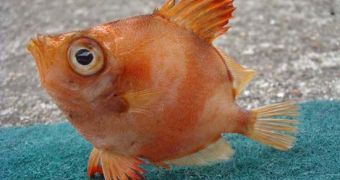A study recently made available to the general public in the journal Science maintains that, as several investigations have shown, the anti-depressants and anti-anxiety drugs various people use on a regular basis ultimately impact on aquatic wildlife and especially on fish.
More precisely, these drugs make their way into our world's waterways and, once fish become exposed to them, they tend to change their behavior.
The researchers who took the time to investigate this issue explain that, by the looks of it, drugs such as Valium, Xanax and other similar ones more often than not compel fish into displaying less fear and more recklessness, even if the concentrations the fish are exposed to might appear insignificant.
Furthermore, fish whose bodies absorb such anti-depressants and anti-anxiety drugs are likely to feed a tad faster than others and prefer being alone to swimming together with the rest of their shoal.
“This [swimming together] is a known strategy for survival and growth. But those who swim in oxazepam [a chemical compound used to treat anxiety] become considerably bolder,” explained study leader Dr Tomas Brodin, from Umea University in Sweden.
“They become more active, they become asocial and they become risk-taking,” this researcher went on to add.
Interestingly enough, it is believed that, because of these drug-induced changes in their behavior, fish are more prone to being eaten by predators, Scientific American reports.
This is because their being relaxed all the time makes it impossible for them to properly keep tabs on what is happening in their surrounding environment.
Researchers explain that this could eventually lead to environment imbalances, meaning that the fish population could witness a considerable decline.
Commenting on these findings, Dr. Jerker Fick, a chemist currently working with the Umea University in Sweden, made a case of how, “The solution to the problem is not to stop medicating ill people but to try to develop sewage treatment plants that can capture environmentally hazardous drugs.”

 14 DAY TRIAL //
14 DAY TRIAL //